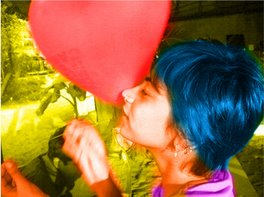More thoughts on MOMI
About 100,000 Indian women die every year due to lack of skilled care during pregnancy.
About 100,000 Indian women die every year due to lack of skilled care during pregnancy.
Posted by
Radhika Bhalla
at
12:45 PM
3
comments
![]()
I wanted to do a project on Women and Water and so I spent this summer trying to figure out what would be the best thing to do. When I first googled the topic, I was swamped with information. But not all this information was relevant. And there were many things that I needed to know that I could not find (or took very long to find). One thing I realized was that a lot of research has been done on safe clean drinking water. There are a lot of products and systems out there tackling the issue, but there is no one place to get all this information. And thus I took it upon myself to create a portal where one could find a way to implement projects related to water, sanitation, and hygiene specific to a certain geographic area. Below, is my final presentation for the same.
Posted by
Radhika Bhalla
at
12:23 PM
0
comments
![]()





Posted by
Radhika Bhalla
at
11:24 AM
0
comments
![]()
I created this email as an update for my Independent Study instructors. It's more like my thoughts on how I'm going to present all the research I've been doing this term to help me pick out options for my final thesis project. Take a look and I want all your questions/comments.
Posted by
Radhika Bhalla
at
5:59 PM
0
comments
![]()
Posted by
Radhika Bhalla
at
7:52 PM
0
comments
![]()
Posted by
Radhika Bhalla
at
7:33 PM
0
comments
![]()
Posted by
Radhika Bhalla
at
7:14 PM
0
comments
![]()
Posted by
Radhika Bhalla
at
7:10 PM
0
comments
![]()
